If you’re homesteading and want something beyond the norm, you might want to consider raising chickens with feathered feet. Chickens with feathered feet are kept for various purposes, including egg and meat production, as well as for showing. They make lovely pets and are always a source of wonder for kids. There are different chicken breeds with feathered feet to choose from.
1. Cochins

Cochins are feathered from head to toe; you can’t pass by them without admiring them. They were first discovered in China in the 1840s and belong to an Asian class of three different chicken breeds, the other being Langshan and Brahma.
Due to their origin, they were referred to as ‘Cochins-China’ before becoming known as ‘Cochins.’ Historically, farmers bred Cochins primarily for meat and egg production. In 1874, the American Poultry Association recognized the Cochins.
- Main Use: Show
- Weigh: 10 – 11 lbs
- Egg Production (annual): 150 – 180
- Egg Color: Brown
- Egg Size: Medium
Appearance
Cochins are tall chickens. Many breeders refer to them as head-to-toe feathered chickens. The feathers are soft and fluffy; you have to carry them in your hands and part the feathers to see their legs.
Their wattles, earlobes, and single combs are red, but their eyes are yellow. A Cochin has five well-defined points on its comb and large wings; however, it doesn’t fly. The roosters weigh about 11 pounds while the hens, 8 pounds Cochins come in different colors such as Birchen, Columbian, Barred, Blue, Brown, Red, etc.
Temperament
This set of chickens are incredibly calm. You’ll always find them where you keep them; they’re not given to foraging like other chicken breeds. Therefore, you can easily domesticate Cochins.
Even in uncomfortable situations, they make themselves comfortable. They also make good mothers; they’re prolific at brooding, but you have to keep an eye on them so as not to break the eggs they sit on because of their size.
Care
They’re very healthy and lay about 150 eggs and above every year. Their feathered bodies make them cold-hardy; however, they’re vulnerable to heat. As such, you should keep them in a well-lit and ventilated area. They require a high amount of protein and eat a lot but aren’t active. Ensure you make them often exercise so as not to become obese and damage their health.
2. Faverolles
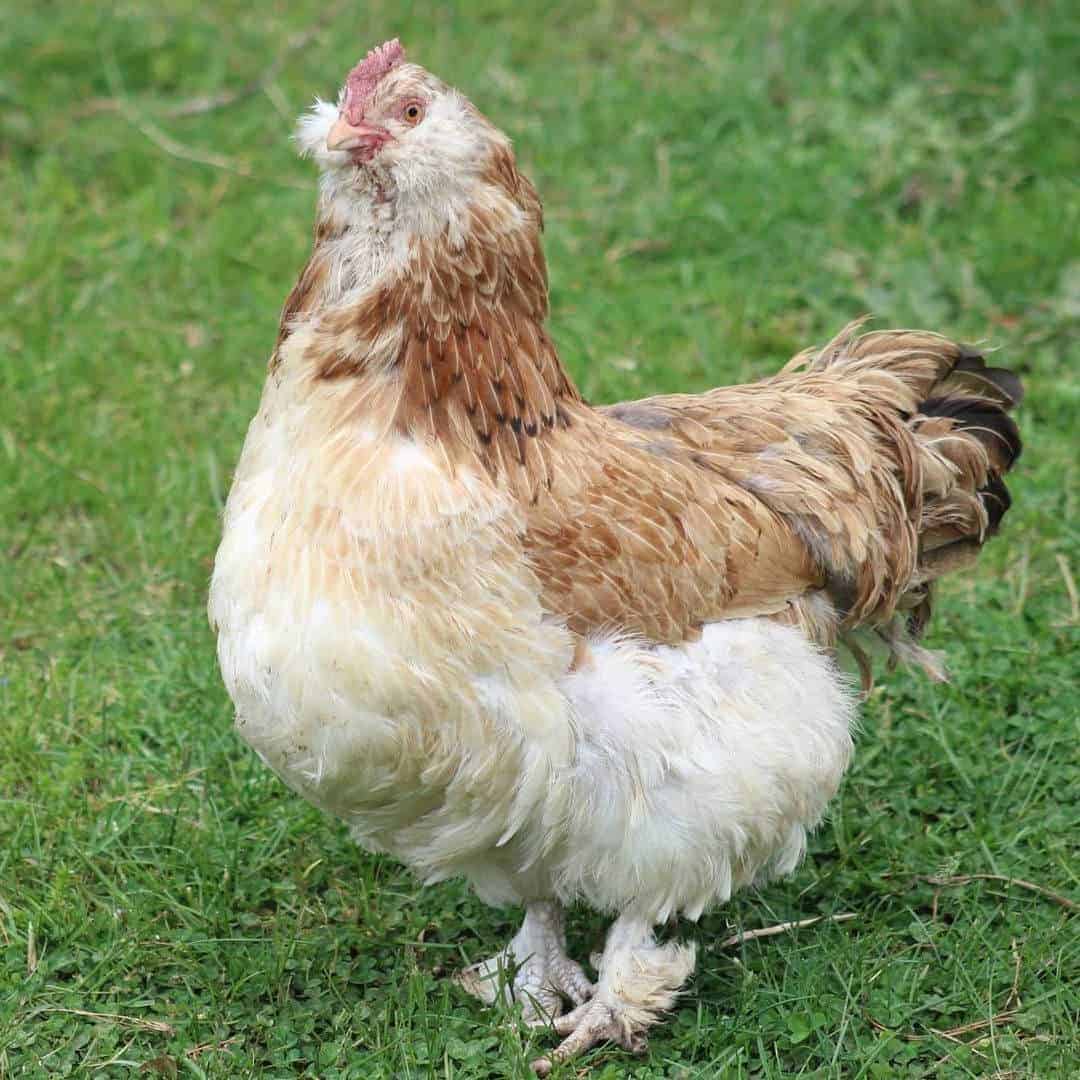
Faverolles were created from crossing Dorkings, Houdans, and Cochins in the 1860s in the French cities of Houdan and Faverolle. This explains why they were named after the town, Faverolle.
These dual-purpose chickens come in two varieties: Salmon and White. The American Poultry Association admitted Salmon Faverolles in 1914 and White Faverolles in 1981. In the 1900s, this chicken breed was exported to America.
- Main Use: Egg, Meat
- Weigh: 6.5 – 8 lbs
- Egg Production (annual): 220-240
- Egg Color: Cream
- Egg Size: Medium
Appearance
You’d find almost all the colors of the rainbow on a Faverolles’ body. They have fluffy faces with beards, red eyes, and small wattles. You’ll find 5 points on their single combs. Their bodies are broad and deep, which makes them more prominent.
They have five toes on each of their feathered feet. They are white-skinned, and their beaks are pink. Their undersides are gray, while the rest of their bodies are cream-colored. The rooster usually weighs 8 pounds, while the hens weigh 6½ pounds.
Temperament
If you’re looking for a chicken breed that is both comical and curious, the Faverolles are a good fit. They’re adorable and enjoy human contact a lot. You can put them on your laps and pet them. They are easily pliable; you won’t find them being aggressive.
If you’re raising them with other birds in a flock, you have to watch them prevent other chicken breeds from taking advantage of their docility. They love to forage but also do well with confinement. You’ll get about 200 eggs or more from them per year.
Care
Even though their feathered bodies serve as a covering for them, you need to inspect them regularly to avoid parasites from hiding in their feathers. Asides from this, Faverolles are healthy chickens with no susceptibility. Just make sure you provide food and water for them and keep them in clean conditions.
3. Brahma
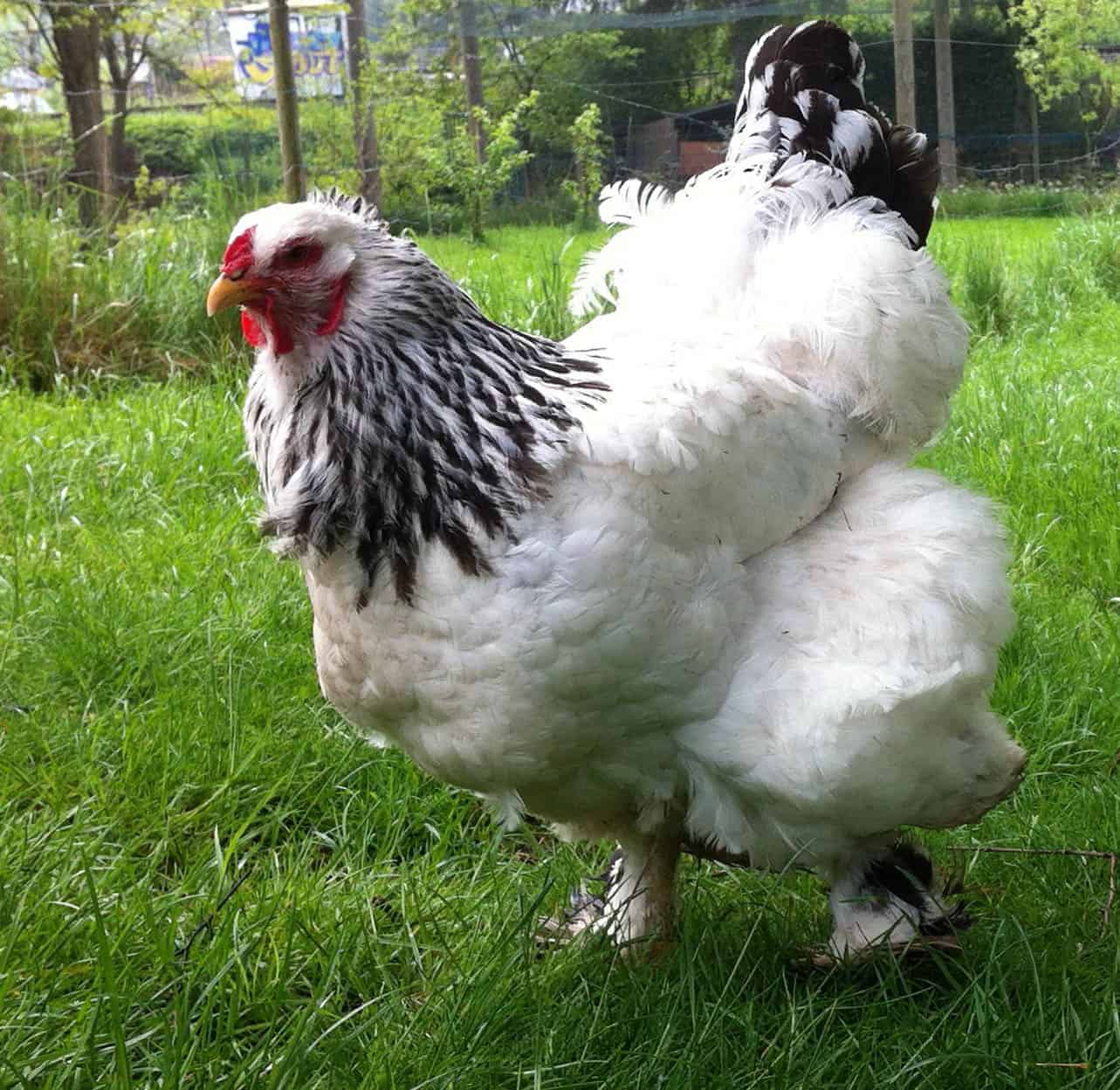
The Brahma chicken is one of the main Asia breeds, with the other two being Cochins and Langshan. This chicken breed was created by crossing the Shanghai and Chittagong and gets its name from the Brahmaputra River in India.
It is of five varieties: light, dark, black, white, and bluff, and considered a heritage chicken. The American Poultry Association recognized only the light and dark varieties before the end of the twentieth century.
- Main Use: Egg, Meat
- Weigh: 10 – 12 lbs
- Egg Production (annual): 150-200
- Egg Color: Brown
- Egg Size: Large
Appearance
Often referred to as the King of Chickens, Brahmas are large-sized with elongated and wide bodies. They’re feathered on every part of their bodies, but their feathers are tightly fitted. Some flesh hangs over their eyes, but their beaks are strong.
If you’re raising a light Brahma, the chicken’s feathers are white with black tones. The tail is also black. For the Buff variety, most body parts are buff with other color tones, whereas the Dark variety has most parts of its body as black, but the breast and wings are gray. The appearance depends on the feather pattern your Brahma has. The roosters weigh 10 pounds, while the hens, 8 pounds.
Temperament
Even though the Brahma is large, it is docile and sweet-tempered. You won’t find it being aggressive or proving difficult to handle. However, the Brahma loves foraging but are poor flyers. Due to its size, it’d quickly get more food in a flock, but don’t bully other chickens’ breeds that are smaller than them. It’d even defend the flock against any disturbance and sometimes join other breeds to beg for treats.
Care
Their thick feathers allow them to cope in cold climates. However, their feathered feet can house parasites like lice or gather dirt, so you have to inspect them often. They require a high protein diet and eat a lot. They also love having their own space. Provide adequate food and water so that they won’t turn on other chicken breeds in your flock.
4. Silkies

Silkies are primarily show birds because of their unique features. They’re feathered all through and were first spotted in China in the 13th century. They got their name from their silky plumage.
- Main Use: Show
- Weigh: 3 – 4 lbs
- Egg Production (annual): 120 – 160
- Egg Color: Cream
- Egg Size: Tiny
Appearance
Silkies are bantam chickens, which means they are small-sized. Some varieties have beards. Their earlobes are bright blue, while their wattles and combs are black.
Their faces are black, but surprisingly, you’d see black skin too underneath the silky feathers. Besides, their feathers can be blue, black, white, gold, etc. A Silkie’s head has a lot of hair, which is a distinct feature. You can recognize a Silkie from afar just by seeing its fuzzy head.
Temperament
They’re effortless to breed, love to play with children, and are non-aggressive. They aren’t noisy and can live with humans as pets, making them perfect for homesteading. They are also peace lovers and won’t be the first to start a fight.
However, it’s difficult for them to be their natural selves if aggressive chicken breeds are in the flock. It would help if you raised your Silkies with peaceful chicken breeds too. They are cuddly; they expect you to pet them on your laps till they sleep. They love to brood over eggs, even if the eggs aren’t theirs.
Care
Silkies are usually more vulnerable to some poultry diseases. But once you vaccinate them, they are healthy. Their fluffy feathers don’t protect them from cold, so they aren’t cold-hardy.
You have to pay special attention to them during cold seasons and regularly treat them. With adequate care, they’ll live longer. Include treats in their diet and keep them from foraging into unsafe areas to protect them from predators.
5. Pekin Bantams
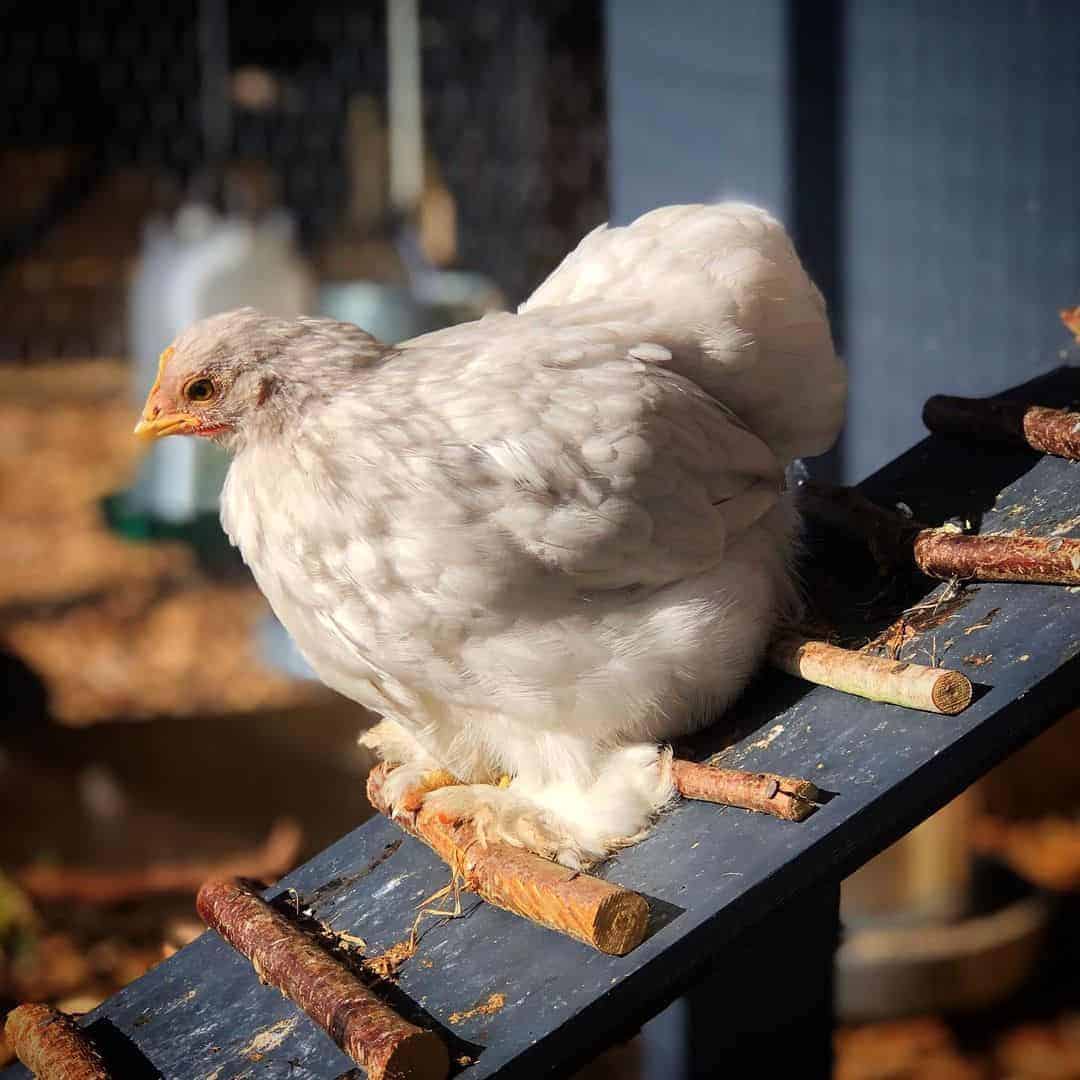
Formerly known as Cochin China Bantams, Pekins are feathered all through and small in size. Adult Pekins are typically up to 30 centimeters tall. They were exported from Peking, now presently called Beijing, in China. They got their name from their place of origin.
- Main Use: Show
- Weigh: 570 – 680 g
- Egg Production (annual): 50 – 100
- Egg Color: white or cream
- Egg Size:Small
Appearance
Pekins are bantam chickens with unique plumage. Their feathers are so full and fluffy; you’d think the feathers have feathers when you see a Pekin.
This also highlights their roundedness. Pekins have different colors – mottled, black, cuckoo, birchen, Patridge, Colombian, lavender, etc. Their posture often has their heads close to the ground, causing them to tilt forward. They have single combs with gorgeous tails.
Temperament
This group of chickens might be small in size, but they are fun lovers. They’re also quick to love other chicken breeds, in addition to their gentle and friendly nature. You won’t have any problem taming a Pekin.
They lay small, white, or cream-colored eggs which they love to sit on. They’re primarily bred for eggs or ornamental purposes. Naturally, they have good maternal qualities, and their lifespan expectancy ranges from 5 to 7 years if you take care of them well.
They love treats and will do better if you make time to bond with them. They’re generally quiet but can become noisy as they grow older and become protective of others. They’re okay with being confined, so you don’t have to worry about putting them in a large space.
Care
Not only do they make good backyard chickens, but Pekins also don’t usually have health issues. They might not be as strong as other birds, but they aren’t weak. But you have to care for their feathers. Since they have a full plumage, it’s easier for lice and ticks to live in them. Also, don’t let them stay wet for long as they can’t withstand being exposed to cold for long.
6. French Marans
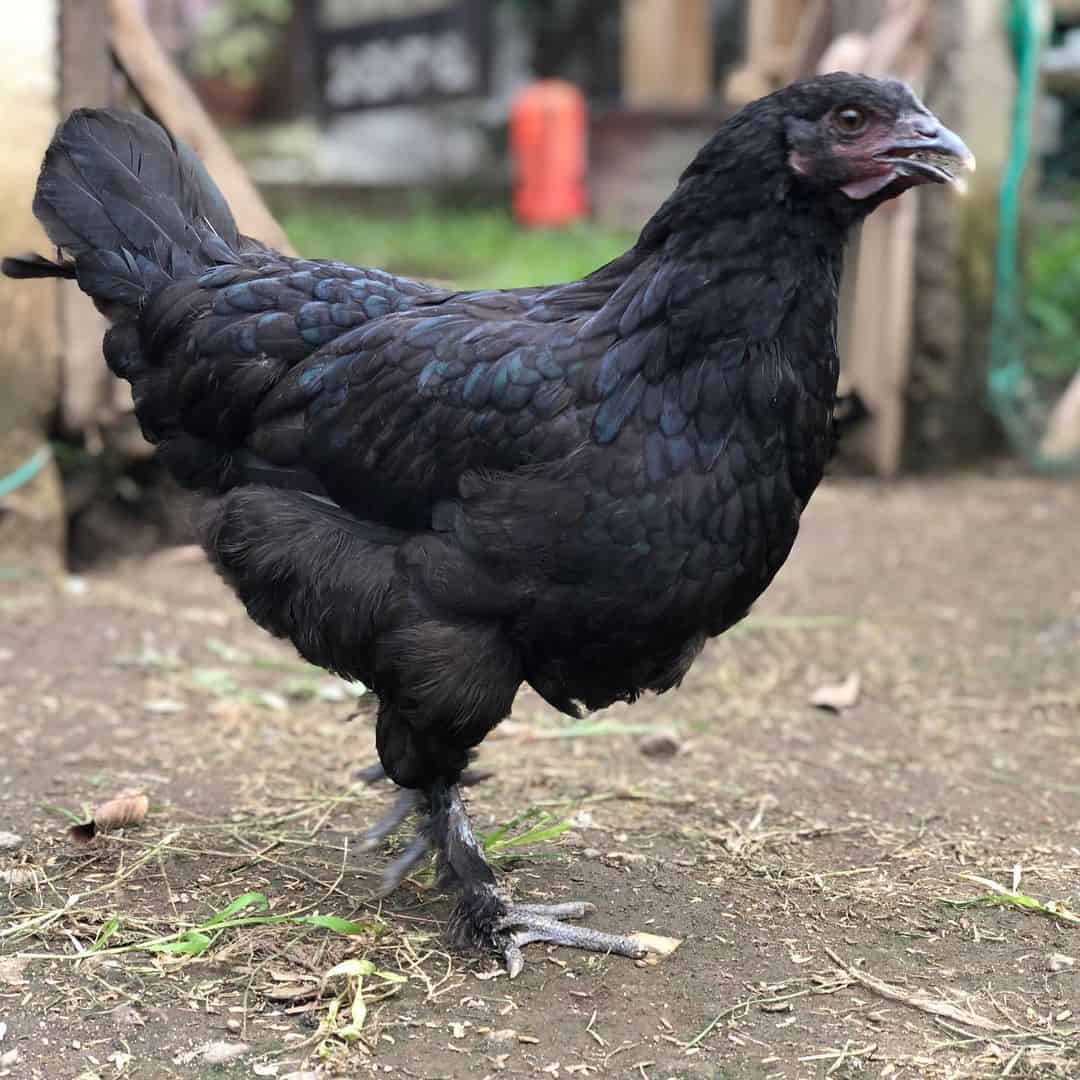
There are two types of Marans: English and French. Only the French Marans have feathered feet. The French Marans were created in the French town of Marans by crossing different breeds.
The breeds that were crossed are uncertain, but it’s widely speculated species such as Faverolles and Langshans were used. French Marans come in Salmon, Golden Cuckoo, Brown red, Blue Copper, Birchen, etc.
- Main Use: Egg, Meat
- Weigh: 7– 8 lbs
- Egg Production (annual): 150 – 200
- Egg Color: Dark Brown
- Egg Size: Large
Appearance
French Marans have short, non-fluffy feathers. Their shoulders are carried high, and their bodies are strong and broad. Their earlobes and wattles are red, while their combs have sharp edges.
They have short wings, large breasts, and horn-colored beaks. Their appearance and carriage portray them as strong birds. The roosters typically weigh around 8 pounds, while the hens average 6.5 pounds. The chicks always have different patterns and colors.
Temperament
They aren’t naturally broody, although there might be some exceptions in a flock. They’re famous for laying big, deep-brown eggs. French Marans start laying eggs right from 6 months. Sometimes, they can begin as early as 5 months.
They’re great foragers, and you’ll find them running through your backyard often. Their personalities vary. Some are friendly but not noisy or docile. They love human contact but resist handling it sometimes.
On the other hand, some are flighty and docile. If you want your French Marans to be healthy and happy, allow them to forage often. They do well in a mixed flock and will be very assertive if need be.
Care
They’re prone to frostbites, so you want to protect some parts of their bodies, such as their combs, earlobes, etc. Also, you should inspect their feathered feet regularly to prevent pests from living there. If you’re raising French Marans for meat, you’d have to spend lots of resources on them. They take longer to mature enough to be eaten; however, their meat is delicious.
7. Belgian d’Uccles
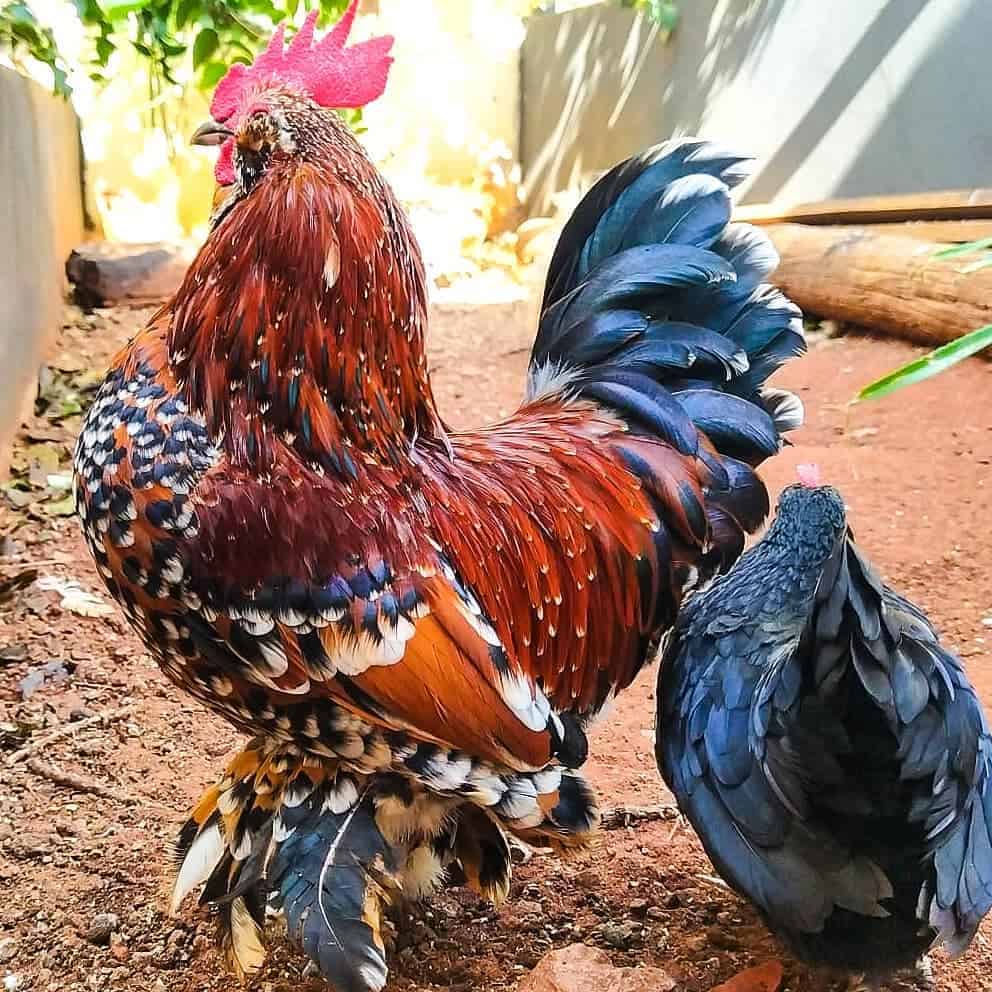
Belgian d’Uccles are feathered-feet bantam chickens that were first bred in Uccle, Belgian in the 1900s by Michel Van Gelder. Their breeders put them in poultry shows which made this chicken breed popular. The American Poultry Association recognized them in 1914.
- Main Use: Show
- Weigh: 650 – 750 g
- Egg Production (annual): 80 – 100
- Egg Color: Cream, Tinted
- Egg Size:Small
Appearance
Both the roosters and hens have bearded faces and fully-feathered legs and feet. Belgian d’Uccles are usually confused with other chicken breeds like Booted Bantams, etc., but there are significant differences between these breeds.
They have broad chests and small backlines, and their bodies are V-shaped, unlike other chicken breeds. They hold themselves high, which makes their appearance impressive. As such, they’re nicknamed “living flowers of our garden.”
Temperament
Aggressiveness isn’t in the nature of Belgian d’Uccles. Both the roosters and hens are very calm and friendly. Even interaction between one another is limited, especially when each chicken has enough to eat and drink.
They respond well to human contact. However, because they are small-sized, they’re likely to be bullied by other more aggressive chickens. They’re active and love to free-range. As such, it’s essential that you closely examine the breeds you’ll be introducing into their flock.
To be on the safe side, you can mix them with docile chickens. Belgian d’Uccles are naturally broody but don’t lay many eggs. You might barely get up to 120 eggs per year from each. They pay attention to their chicks, which increases the chicks ‘ survival rates.
Care
As common to other chickens, Belgian d’Uccles are prone to poultry diseases such as Marek’s disease. If you’re raising them with different chicken breeds, provide them food and water separately.
Due to their size, they’re low on the chickens’ pecking order and might not get the chance to eat and drink as they should. Ensure you provide dust bathing spaces for them to prevent parasites from living in their feathers.
Summary
While raising chicken breeds with feathered feet makes your flock more colorful, they require special attention and care. The high amount of feathers make them susceptible to parasites like mites, ticks, etc., so you have to trim the feathers regularly and ensure they’re not wet. This way, they’ll be healthier and live longer.


Joseph Hudson has been raising chickens for over 15 years. In 2018, he completed the Agriculture & Natural Resources program at Mt. San Antonio College. He currently raises over 1400 chickens on his 7.5-hectare farm. He keeps sharing his experience on raising healthy and happy chickens on Chicken Scratch The Foundry.
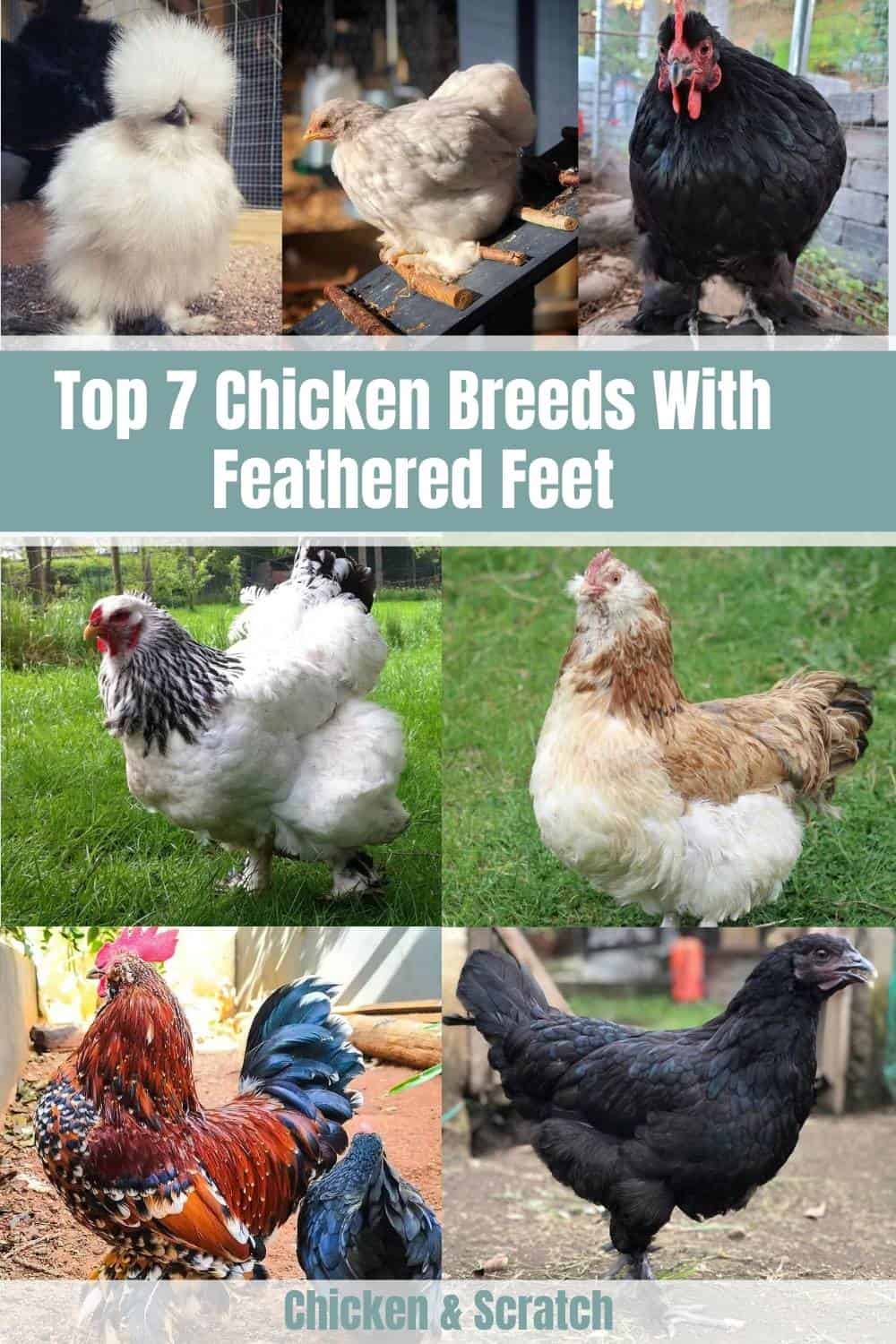







THANKS A BUNCH FOR SEEING BEAUTIFUL BREEDS , I WOULD LIKE TO RARE IN KISUMU- CITY- KENYA.
I couldn’t see feathers on the feet of the black copper marans so bit confused…..
Need some for poultry where Will get it here in Ghana